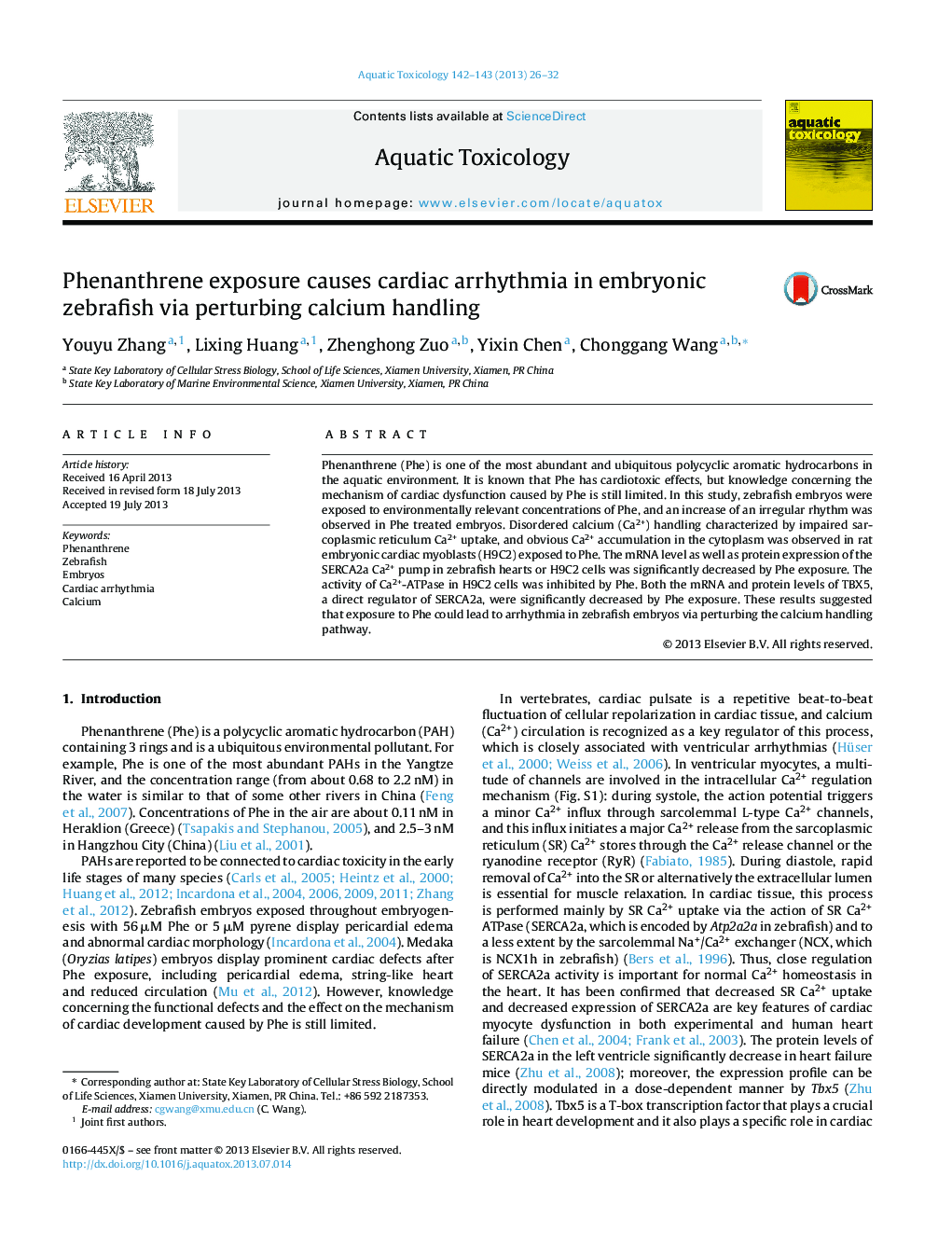| Article ID | Journal | Published Year | Pages | File Type |
|---|---|---|---|---|
| 4529420 | Aquatic Toxicology | 2013 | 7 Pages |
•Exposure to Phe caused arrhythmia in Zebrafish embryos.•Phe disordered sarcoplasmic reticulum (SR) Ca2+ uptaking in rat embryonic cardiac myoblasts (H9C2).•The expression of SERCA2a in zebrafish hearts or H9C2 cells was significantly decreased by Phe exposure.•Phe exposure depressed the expression of TBX5 in zebrafish hearts.
Phenanthrene (Phe) is one of the most abundant and ubiquitous polycyclic aromatic hydrocarbons in the aquatic environment. It is known that Phe has cardiotoxic effects, but knowledge concerning the mechanism of cardiac dysfunction caused by Phe is still limited. In this study, zebrafish embryos were exposed to environmentally relevant concentrations of Phe, and an increase of an irregular rhythm was observed in Phe treated embryos. Disordered calcium (Ca2+) handling characterized by impaired sarcoplasmic reticulum Ca2+ uptake, and obvious Ca2+ accumulation in the cytoplasm was observed in rat embryonic cardiac myoblasts (H9C2) exposed to Phe. The mRNA level as well as protein expression of the SERCA2a Ca2+ pump in zebrafish hearts or H9C2 cells was significantly decreased by Phe exposure. The activity of Ca2+-ATPase in H9C2 cells was inhibited by Phe. Both the mRNA and protein levels of TBX5, a direct regulator of SERCA2a, were significantly decreased by Phe exposure. These results suggested that exposure to Phe could lead to arrhythmia in zebrafish embryos via perturbing the calcium handling pathway.
